Table of Contents
- Famous Temples in Asia
- 1. Angkor Wat, Cambodia
- 2. Borobudur Temple, Indonesia
- 3. The Sri Sivan Temple, Singapore
- 4. The Temple of Heaven, Beijing, China
- 5. Sree Padmanabhaswamy Temple, India
- 6. Wat Rong Khun, Thailand
- 7. Shwedagon Pagoda, Myanmar
- 8. Wat Phra Kaew, Thailand
- 9. Kinkaku-Ji, Japan
- 10. Taman Saraswati Temple, Indonesia
- 11. Kek Lok Si, Malaysia
- 12. Lotus Temple, India
- 13. Wat Arun, Thailand
- 14. Besakih Temple, Indonesia
- 15. Thatbyinnyu Temple, Myanmar
- 16. Yonghe Temple, China
- 17. Dambulla Cave Temple, Sri Lanka
- 18. Pha That Luang, Laos
- 19. Dhammayangyi Temple, Myanmar
- 20. Boudhanath, Nepal
- 21. Baalbek, Lebanon
- 22. Batu Caves, Malaysia
- 23. Ananda Temple, Myanmar
- 24. Mahabodhi Temple, India
- 25. Sensō-Ji, Japan
- 26. Lungshan Temple, Taiwan
- 27. Ayutthaya Temples, Thailand
- 28. Virupaksha Temple, India
- 29. Golden Temple, Punjab, India
- 30. Paro Taktsang Monastery, Bhutan
Asia is famous for its wealth of diverse cultures, unique wildlife, and breathtaking landscapes that can only be found in the largest continent on earth. Millions of tourists and pilgrims travel to Asia in search of spirituality and peace in a fast-paced world filled with turmoil and materialism.
The abundance of temples and sacred shrines on this continent is unparalleled with many famous temples to choose from, each with its own fascinating history and story to tell.
Famous Temples in Asia
1. Angkor Wat, Cambodia
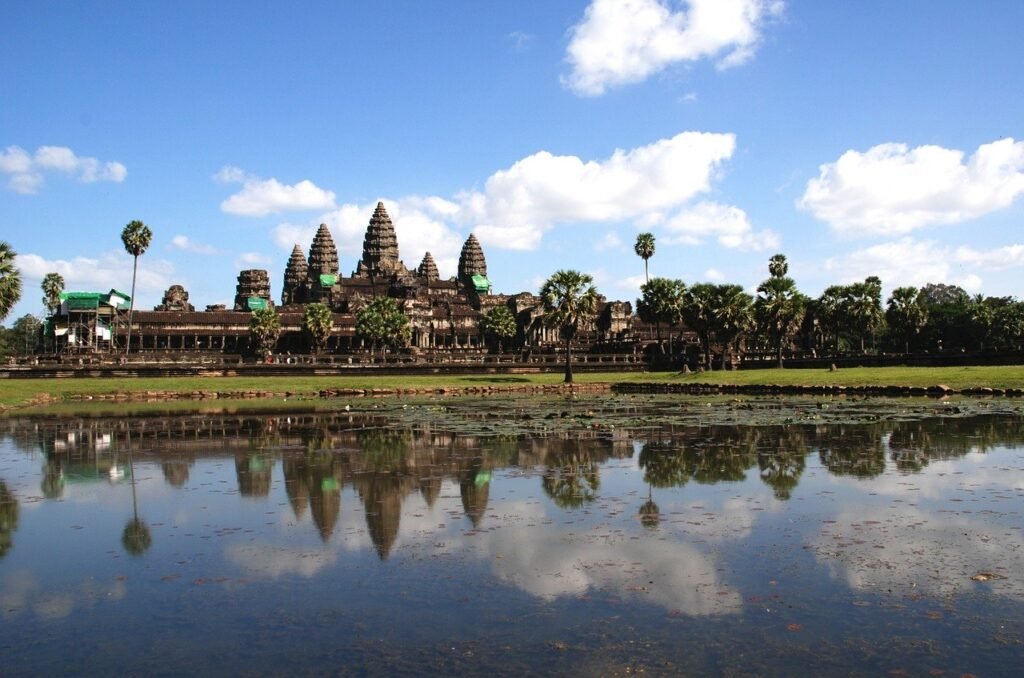
We begin our journey in the heart of what was once the walled city of the powerful Khmer Empire. Angkor Wat or Temple City was designed to resemble Mount Maru. Hence, the five towers that rise above Siem Reap and its priceless ruins.
The region is also home to Banteay Srei and Bayon temples. Banteay Srei is famous for its distinctive pinkish sandstone exterior and intricately carved walls. Bayon is known for its army of tranquil stone faces that were carved into its 54 gothic towers.
2. Borobudur Temple, Indonesia

Online photographs of temples such as Borobudur fail to capture the grandeur of this UNESCO World Heritage Site. The impressive Borobudur is one of the most famous Asian temples, and for good reason. The temple serves as a shrine to Buddha and was built between the 8th and 9th centuries in central Java.
Each of the nine levels tells a story about Buddhist cosmology. The base levels represent the world of desire. The top levels of the temple represent the highest level of enlightenment.
3. The Sri Sivan Temple, Singapore

Sri Sivan finally found a home in Geylang East Avenue in Singapore after decades of relocation. The current temple serves as a shrine to the God Shiva. It has a distinct ivory exterior and an octagonal structure complete with a multipurpose hall where six main prayers are held on a daily basis.
Combining South and North Indian architectural influences, Sri Sivan hosts many festivals in honor of many deities such as Lord Ganesha and Lord Muruga.
4. The Temple of Heaven, Beijing, China

Rising above the mist outside the city of Beijing is an ancient temple dedicated to the God of Heaven. The impressive structure was visited by many Chinese emperors throughout the centuries. Every year, the emperor would travel to the temple to pray and offer a series of extravagant sacrifices.
The complex represents heaven and earth and is heavy with spiritual symbolism. The temple complex is a UNESCO Heritage Site. It’s a tourist magnet thanks to its impressive garden landscape and three-tiered conically roofed Qinian Hall.
5. Sree Padmanabhaswamy Temple, India

Kerala is home to one of the most famous Asian temples on the continent. Sree Padmanabhaswamy was built to serve the Hindu deity known as Maha Vishnu and is a marriage between traditional Kerala and Dravidian styles of architecture. The main attraction at the temple is none other than the gopuram. The tower structure has seven floors with windows and was specifically designed with the sun in mind.
During the two days of the equinox, visitors can witness the setting sunshine through each of the gopuram windows. The temple is famous for its hidden vaults where treasures were discovered in 2011. These treasures included golden idols, diamond necklaces as well as gold coins and emeralds.
6. Wat Rong Khun, Thailand

This snow-white temple is located in the Mueang Chiang Rai District and is an Asian temple with an artistic modern twist. Arms reach up to meet you as you cross the bridge to this architectural marvel whose exterior represents purity. Glass mosaic and mirrors adorn the temple, making its surface twinkle at night.
The mirrors are meant to symbolize Buddha’s wisdom. The entire building and its surroundings were designed with the Buddhist cycle of Birth in mind. There are many pop culture references scattered both inside and outside the temple. Murals featuring superheroes and western figures such as Iron Man and Neo from the Matrix.
7. Shwedagon Pagoda, Myanmar
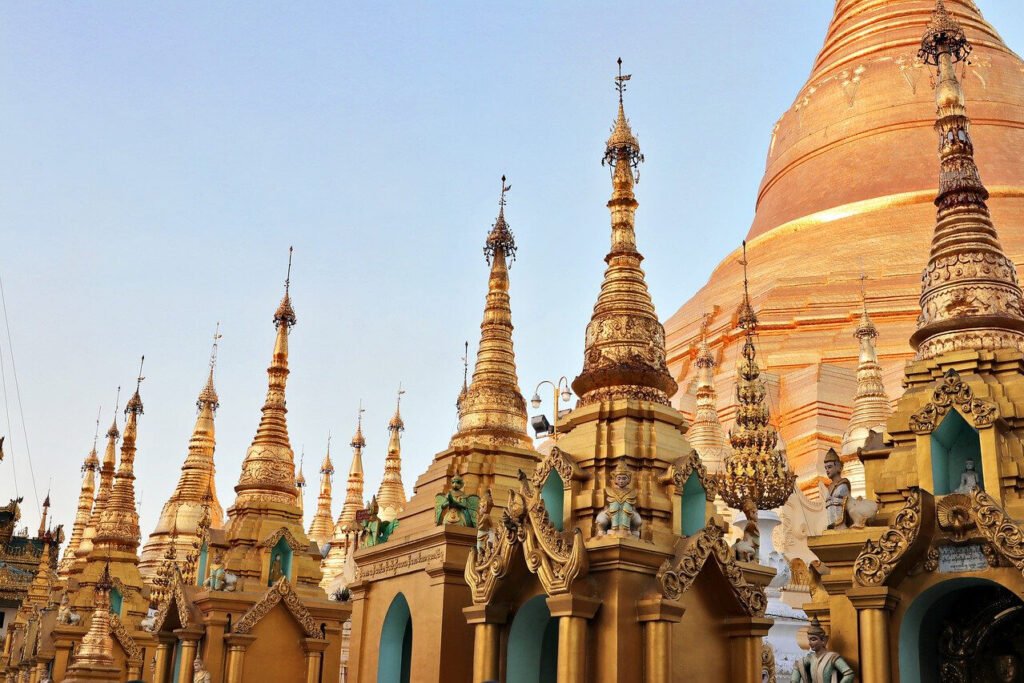
Shwedagon Pagoda towers over the streets of Yangon. It’s like a golden beacon guarded by Burmese mythological lions and houses sacred relics from previous Buddhas. The octagonal structure contains shrines based on Eastern astrology. Visitors can offer flowers and burn candles at the shrine that coincides with their day of birth.
Murals depicting the previous reincarnations of Budhha can be found in the prayer pavilions. Mirror mosaics adorn some of the temple pillars, adding more dazzle to the lively temple walls.
The 60,000 square meter terrace allows visitors to feast their eyes on the gold-covered stupa and its diamond-studded spire. Shwedagon Pagoda is one of several Myanmar temples that showcase the beauty and spirituality of a region that endured earthquakes, wars, and turmoil.
8. Wat Phra Kaew, Thailand
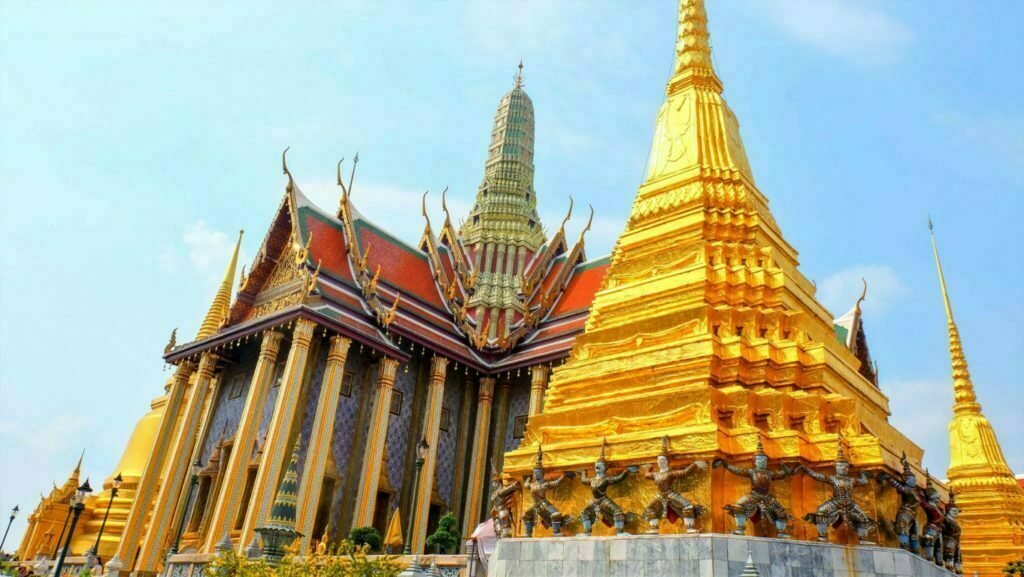
Giant Yaksha demons guard the Wat Pura Kaew in Bangkok and its emerald-colored resident. This famous temple in Asia is also known as the Royal Temple. It’s part of the collection of temples in the Grand Palace and of the top things to do in Bangkok. The Emerald Budhha is one of several attractions at this highly decorated temple. The inner walls consist of around 178 panels that depict the triumph of good over evil.
The exterior is just as impressive and features a golden stupa in addition to a colorful tiled roof as well as vibrant mosaics. The temple was built in the 18th century back when Thailand was known as the Kingdom of Siam.
9. Kinkaku-Ji, Japan

Kyoto is not only famous for its serene green spaces and locally crafted tofu. The Japanese city is also home to many UNESCO World Heritage sites including Kinkaku-Ji. The 14th-century temple is a symbol of the ostentatious Kitayama culture and combines three different architectural styles under one roof.
Samurai and Buddhist influences can be seen in the second and third floors which are covered in dazzling golden foil. An equally glittering phoenix statue graces the roof of the temple as if keeping watch over the temple and its tranquil pond.
10. Taman Saraswati Temple, Indonesia
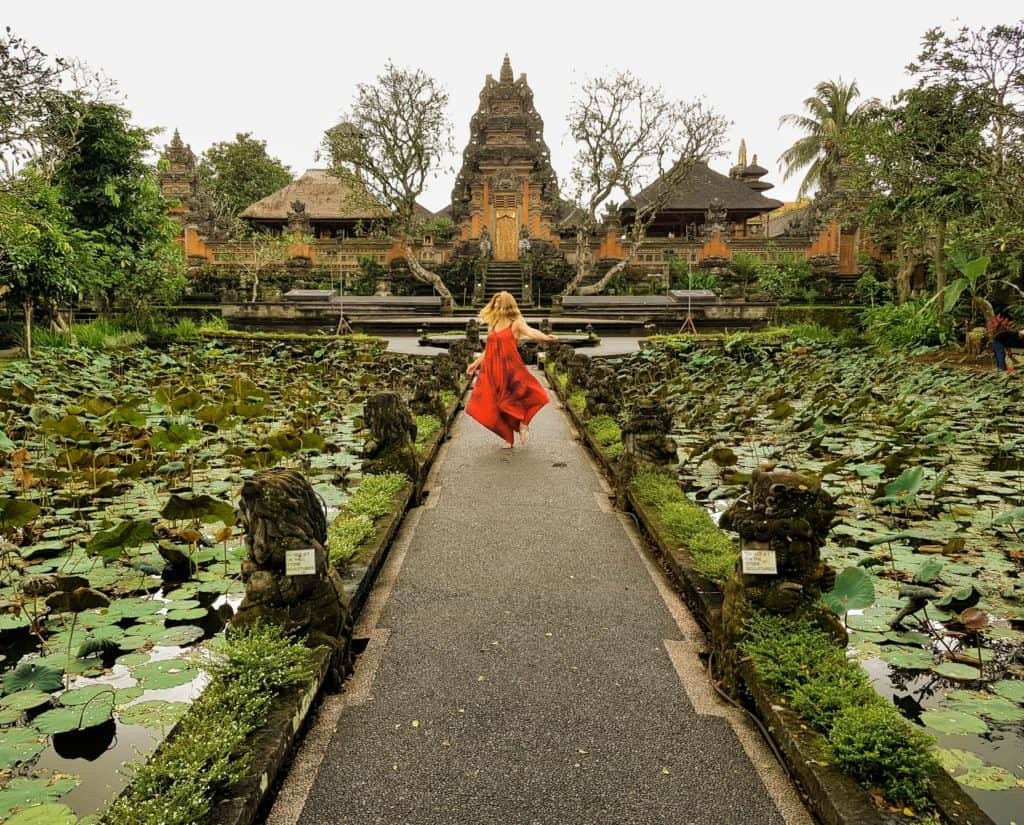
The sunset orange walls of Taman Saraswati perfectly complement the lush green tropical trees surrounding it. The seventy-year-old temple is one of the best temples in Bali. It’s famous for its tranquil lotus pond and sacred geometry architecture.
The structure itself abides by the rules of Tri Mandala meaning that the temple is divided into three different zones. The northeast section of the temple is considered the most sacred. It features an intricately carved golden throne that features Acintya who is considered the Supreme God of Indonesian Hinduism.
11. Kek Lok Si, Malaysia

Kek Lok Si resides over a hilltop in Penang and is known as The Supreme Temple of Bliss. The temple is home to the tall statue of the Goddess of Mercy. It features 10,000 Buddhas in its tiered tower. The impressive temple took around twenty years to build. It’s a sacred place where both Chinese and Mahayana Buddhism rituals take place.
The temple complex has many attractions including a tortoise liberation pond and a wishing tree. Kek Lok Si is a sight to behold during the Chinese New Year. The ocean of glowing lanterns and fireworks that light up the dark sky.
12. Lotus Temple, India

Words simply cannot begin to describe the beauty and symmetry of the Lotus Temple in New Delhi. This Bahai house of worship welcomes people of all cultures and religions. Its design was meant to reflect the spirituality and purity linked to the lotus flower.
Petal-like clusters form the impressive exterior of the temple. It is surrounded by nine turquoise ponds and twenty-seven acres of tranquil gardens. At night, the marble walls are illuminated to create a truly spectacular sight. The interior also focuses on symmetry. It features concentric stars on the ceiling and plenty of natural sunlight during the day.
13. Wat Arun, Thailand
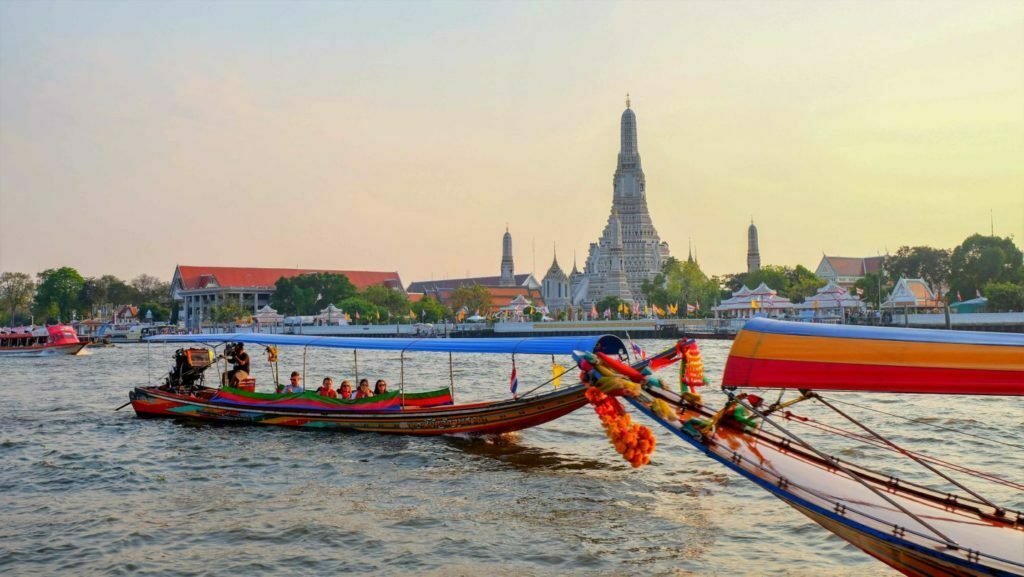
The Temple of Dawn has been watching over the historic heart of Bangkok and its Chao Phraya River for centuries. Menacing statues guard the entrance to the temple where visitors can feast their eyes on an array of mythological and religious figures.
The giant prong symbolizes Mount Meru upon which the earth rests. It is adorned with Chinese porcelain mosaics and colorful seashells. The various levels of the central temple tower are meant to represent the thirty-three heavens. Wat Arun is considered a successful marriage between two distinct architectural styles: Khmer Empire architecture and traditional Thai design.
14. Besakih Temple, Indonesia

This stunning complex is located in Mount Agung and resembles an army of tall pine trees from a distance. Besakih is also known as the Mother Temple. Pura Penataran Agung resides over the sacred mountain slopes with different elevated sections that symbolize the seven layers of the universe.
The tallest temple in the complex is one of three main temples that represent the Hindu Trinity. Panoramic views of the rice fields and hills below make Besakih a must-visit during your trip to Bali.
15. Thatbyinnyu Temple, Myanmar

The Theravada Buddhism era is known for its innovation and artistry when it comes to architecture. This is clearly on display at the Thatbyinnyu Temple in Bagan. Pointed arches and spacious hallways greet visitors as they enter the 12th-century structure.
The temple features multiple terraces that offer panoramic views of the ancient city below. An upper level houses its Golden Buddha. The exterior showcases the bricklaying technique used to build the omniscient temple that has successfully managed to stand the test of time.
16. Yonghe Temple, China

What was once the royal residence of Prince Yongzheng during the Qing Dynasty is now a popular tourist destination that attracts visitors from all over the world. The cherry-red temple combines both Chinese and Tibetan architectural styles and is home to three Guinness World Record relics including the largest sandalwood Budhha in the world and the 500 Arhat Hill.
There are five grand halls in total that showcase different themes. Yonghe is also known as the Eternal Harmony Temple where weeklong festivals take place at the beginning of the Chinese New Year.
17. Dambulla Cave Temple, Sri Lanka
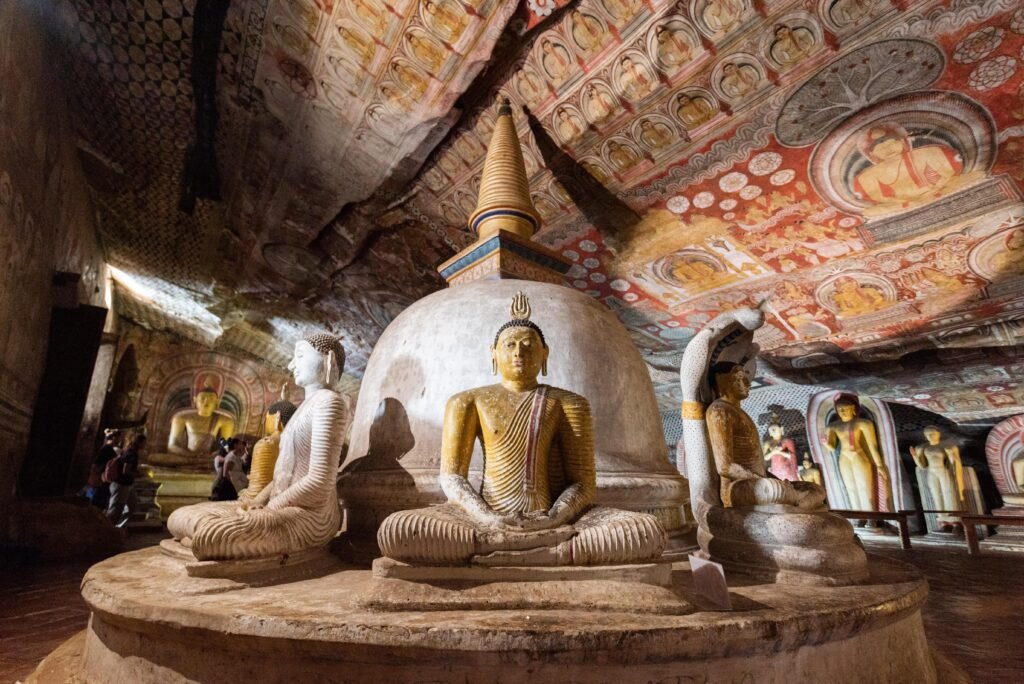
The Dambulla Cave complex in central Sri Lanka is made up of five main caves where visitors can feast their eyes on more than 150 Budhha statues. Each statue has a distinctive pose and most of them have their colors stunningly preserved.
Buddhist mural paintings adorn the walls of the ancient caves while more than 55 different statues of Sri Lankan kings and deities occupy the Cave of the Great Kings. Dambulla was once inhabited by monks who called this area their home, but the current full-time residents happen to be mischievous monkeys. The hike up to the caves offers panoramic views of the countryside below.
18. Pha That Luang, Laos
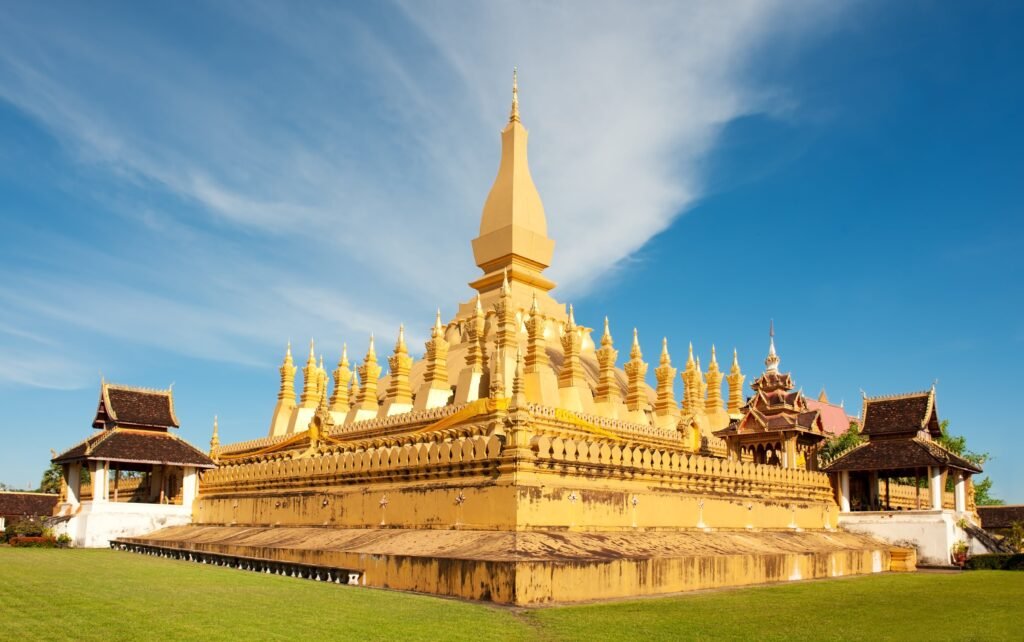
The Great Stupa in Laos is hard to miss thanks to its golden color and sheer height. Legend says the temple harbors one of the most sacred relics in the shape of a breastbone that once belonged to Buddha.
Gold leaf covers the entire structure including its army of stupas. Pha That Luang is a national symbol that appears on the local currency due to its spiritual and historical significance.
19. Dhammayangyi Temple, Myanmar
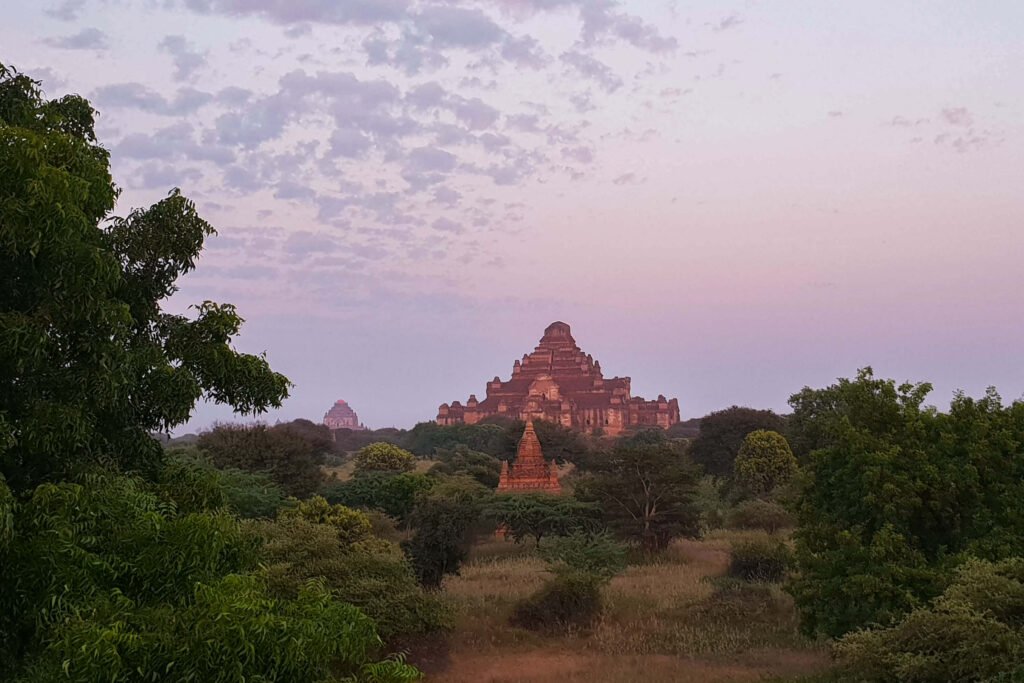
Dhammayangyi is a 12the century temple with an interesting, albeit dark history that involves murder and fratricide. The king who built it had blood on his hands, so he ordered the construction of this stunning pyramid-like structure in order to atone for his crimes.
Dhammayangyi is remarkably similar to the Greek cross in terms of design and has six ascending terraces positioned towards the east. The temple is home to Gautama and Maitreya who reside in its western shrines.
20. Boudhanath, Nepal

Tibetan pilgrims flock over to Boudhanath to take part in the daily Kora ritual which involves walking clockwise around the temple and spinning its prayer wheels. The eyes of Budhha are one of many attractions found within this UNESCO World Heritage Site in Kathmandu.
The main focal point in this ancient temple is the all-encompassing stupa with its large Budhha eyes. Boudhanath. The highly symbolic stupa serves in essence as a three-dimensional reminder of the Buddha’s quest to achieve enlightenment.
21. Baalbek, Lebanon
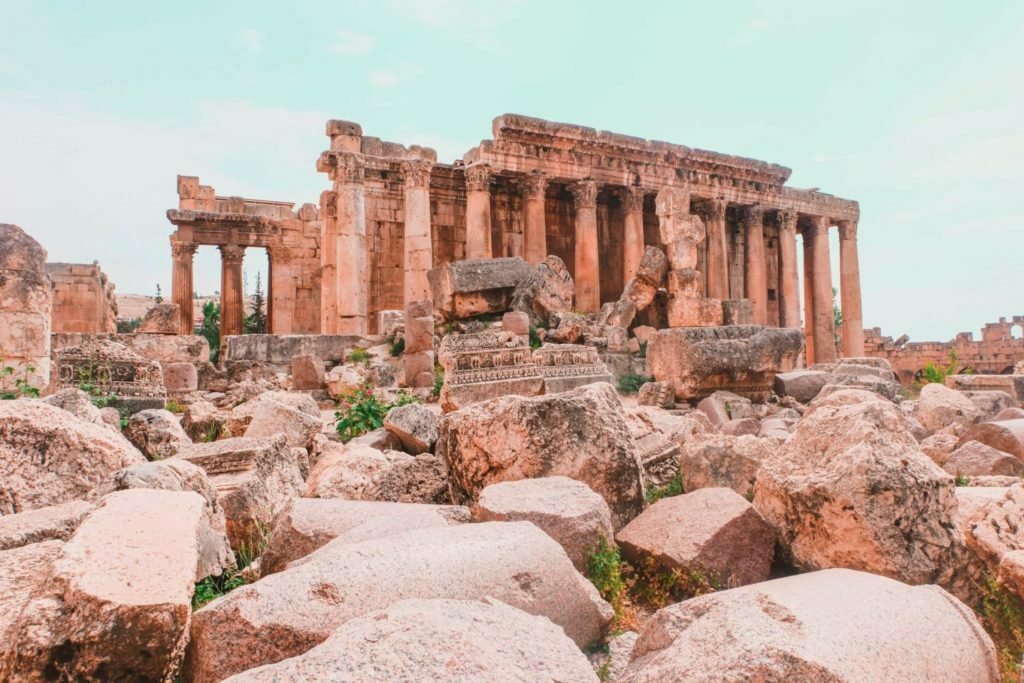
Baalbek lies in the Bekaa Valley in Lebanon and is home to the best-preserved middle eastern temple of the Roman era. The ancient Phoenician City turned Roman Colony was named Heliopolis or the City of the Sun.
Its religious complex is made up of four temples dedicated to Jupiter, Bacchus, Venus, and Mercury. Bacchus is considered a masterpiece of Greco-Roman architecture. It is best known for its 42 Corinthian columns and beautifully decorated ceiling. Egyptian granite from Aswan was brought in to build the complex which is rich in intricate carvings and statues dedicated to the different Roman Gods.
22. Batu Caves, Malaysia

The ancient limestone hill harboring the tranquil Batu Caves is just thirty minutes north of Kuala Lumpur. An enormous golden statue of Lord Murugan greets visitors at the entrance to the cave complex that houses his sacred Hindu Temple.
There are several caves in the area including the Dark Cave and Ramayana Cave where statues and scenes from the Hindu epic are on display.
23. Ananda Temple, Myanmar

Ananda was named after Buddha’s first cousin and disciple and dates back to the Mon State. Both the base of the temple and its terraces are adorned by glazed terracotta plaques that revolve around the birth stories of Buddha.
The outer vaulted corridor houses stone sculptures depicting images from his life. The western shrine is dedicated to two life-size statues that represent both the King who built the temple and the monk who introduced him to the world of Theravada Buddhism.
24. Mahabodhi Temple, India

Mahabodhi in Northeast India is a sacred site. Shakyamuni or Gautama Buddha is said to have achieved enlightenment right under the shade of a bodhi tree. This holy site was originally built in the 3rd century B.C. It is considered The Navel of the Earth according to Buddhist scriptures.
Mahabodhi is home to the golden statue of Buddha that captures the moment he drove off evil spirits during his enlightenment journey. Pilgrims from all over the world visit the temple to walk around the reconstructed tower in a clockwise direction and visit the nearby diamond throne of Budhha.
25. Sensō-Ji, Japan
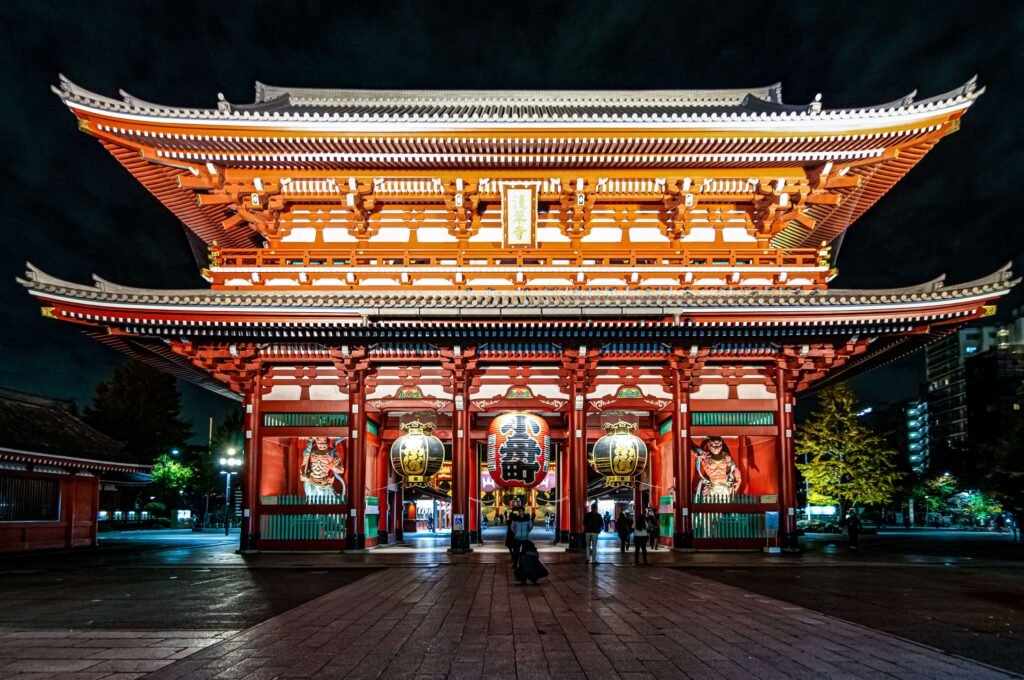
Dragons are synonymous with Senso-Ji and its iconic Hozomon gate in Tokyo. The Buddhist temple was once the family temple of the Tokugawa clan. It is made up of a main hall and a five-story pagoda. Visitors must cleanse themselves with water and incense before making an offering at the main hall by dropping a coin into the saisen box.
There is an abundance of artwork adorning the upper walls and ceilings that is hard to miss. Every year, the Sanja Matsuri festival kicks off in May to celebrate and honor the three men who founded the temple.
26. Lungshan Temple, Taiwan

Lungshan was built during the rule of the Qing Dynasty in 1738 and is located in the city of Taipei. Dragons seem to rule this busy temple and they can be found everywhere.
The stunning dragon fountain and cascading waterfalls give the temple a calming ambiance. Visitors make offerings in the shape of fruit and other delicacies to their chosen deity. Colorful lanterns add to the bright and lively ambiance of the temple. A rear section is specially reserved for Taoist gods.
27. Ayutthaya Temples, Thailand

Ayutthaya was once the capital and the beating heart of the Siamese Kingdom as evident by the wealth of monasteries and palaces in the area.
The creativity and innovation of the people of Siam are clearly on display in the city’s Buddhist temples such as Wat Chaiwattanarm and the Temple of the Reclining Buddha. Each structure in the Ayutthaya temples incorporated designs and techniques from Japan, Europe as well as Persia and China.
28. Virupaksha Temple, India

Virupaksha is located in the ancient city of Hampi and was named after a reincarnation of Lord Shiva with an inner sanctum devoted entirely to him. The temple is another example of Dravidian architecture and was built in the 7th century AD.
Marriage and fertility themes are on display in the mural panels that adorn the walls. Marriage ceremonies take place under the watchful eye of Lord Shiva and his consort, Goddess Pampa.
29. Golden Temple, Punjab, India

The dazzling golden Sikh temple was built in 1574. It is famous for its intricately carved marble walls and a large community kitchen. The kitchen offers more than 100,000 meals to visitors and devotees who flock over to the temple to sing the Gurbani Kirtan hymns all day long.
The temple looks as if it was dipped in 24-carat gold. It has an equally impressive interior that features gold embossed walls complete with birds and flowers engraved into the marble and adorned with precious stones.
30. Paro Taktsang Monastery, Bhutan

This 17th-century temple complex is perched on top of a cliff in Paro Valley where the hills meet the clouds at an altitude of 3000 meters above sea level. Hiking on foot is the only way to reach this remote complex. It is also home to eight caves and an ancient legend about a flying tiger and Buddhist Master Padmasambhava.
The complex is made up of 4 main temples. A large tiger statue can be found in the Hall of Thousand Buddhas. Every morning, the monks who live in this complex rotate the prayer wheel in the courtyard to signal the beginning of a new day.

